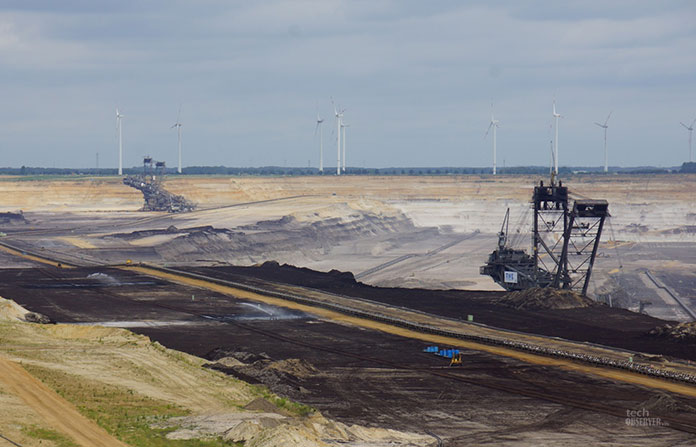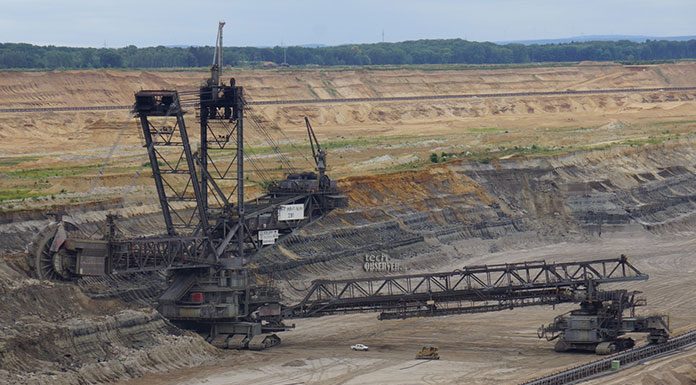Germany's unabated coal extraction continues to threaten several villages across North Rhine-Westphalia and also puts a question mark on its emission goals. Ankush Kumar goes deep down to villages to understand the ongoing tussle between the mining company (RWE) and villagers over issues of compensation, evacuation, quality of life among others.
Norbert Winzen, a resident of an ancient village called Keyenberg in the state of NRW (North Rhine-Westphalia), Germany, is in extreme despair. The state that gave job opportunities to its citizens and attracted investments from various industries due to its energy-rich coal mines has now become a threat to him.
The lignite quarry which was 800 meters away from his village is expanding and moving even closer with every passing day. “Just the big Garzweiler mine, which is now threatening my village called Keyenberg, has devoured 16 villages over the last 40 years and will swallow five more in the next five years”, says Winzen. Residents in Germany's villages situated near the coal mines of the NRW are now living in extreme fear of losing their land due to the expansion of lignite mines.
Europe's largest single lignite deposit
The Tagebau Garzweiler is a surface mine in the German state of NRW. It is operated by the electric utility company RWE AG and is used for mining lignite. Although the country has progressed a lot in renewable energy space, it still relies heavily on coal, which is a source of carbon emissions when burnt.
The Rhineland lignite mining area has the largest single lignite deposit in Europe spread over 40 square kilometers. RWE AG produced just under 100 million tons of lignite in 2017 out of which 79.3 million tonnes were converted into electricity.
About 22 percent of Germany's electricity comes from burning soft lignite coal – and a further 12 percent from hard coal – while some 33 percent is now generated using renewable energy. Europe's biggest economy has an aim to cut greenhouse gas emission upto 40 percent by 2020, 55 percent by 2030 and around 95 percent in 2050, compared to 1990 levels.
“The state of North Rhine-Westphalia is the hot spot for CO2 emissions”, informed Antje Grothus, regional coordinator coal policy, Climate Alliance Germany. Around 147 million out of the 327 million tonnes of energy-related emissions from coal produced nationwide in 2015 came from NRW only. The state's three large lignite mines Inden, Hambach and Garzweiler are still open for years, the latter closing last in 2045.
Thousand years old villages disappear
As per Winzen, it all started about 150 years ago as the mines attracted bigger companies and boosted industrial development. About 950 people used to live in Keyenberg village before the threat of the mining evacuation started. Now, less than 700 are still there. Many of them are about to leave.
The last five generations of Norbert Winzen's family have been living in Keyenberg. The village was first named in an official document in the year 893 but it might be much older, about 2,000 or more years, informed Winzen.
“My father once ran the farm with 30 cows and agriculture products that comprised wheat, yeast, sugar beets and potatoes. When he passed away we stopped running the farm. As my father always told my brothers and me to go and look for other jobs. ‘Don't try to be a farmer here! The farm will exist only a few more years as the lignite mine is coming closer.' Now we are working in different jobs. Only the farm building still exists,” he said.
But it is not only about the fate of Keyenberg village, but the three mines in NRW and seven more in other parts of Germany are also threatening villages everywhere in the country. The inhabitants are also increasingly exposed to air pollution due to coal particles.
Massive protests against the mining expansion
Every year up to 300 people are estimated to be relocated due to mining, said Grothus from the Climate Alliance. At least 130 villages and hamlets that are thousands of years of the settlement are estimated to be destroyed by 2045. Despite mass scale protests in all the regions where the environment and human life is getting affected due to mining, people are still getting displaced. A total of at least 15,000 to 20,000 people will be living on the edge of the coal pit which will create health issues in a big way.


RWE states that they are quite familiar with that kind of protest. Since the 80s, it has been usual that villagers founded associations to preserve their village to be resettled and to stop lignite mining. “As soon as permits were granted to our company and courts confirmed them, local resistance began to erode and to change towards making the best out of resettlement”, said Guido Steffen, spokesman of the RWE AG. “We can compensate locals for their land and their houses, we can grant for additional aids that consider the individual needs of farmers, people running businesses etc, but there's a lot that money can not pay for.”
Winzen currently owns 10,000 square meters of property which he has to sell to RWE AG. This includes a heritage farm which was built in 1816 and now the mine is only 500 meters away from it. The mining company is negotiating with the inhabitants of these villages to settle for a reasonable amount to buy a property at a distance.
Villagers feel disadvantaged
Initially, RWE promised the villagers to allot the same size of the land that they already possess in a new village called “New-Keyenberg”. But at the same time, the mining company told them that there is not enough space for all villagers so it only offered them 3,500 square meters. Also, their horses and other big cattle were not allowed in the new village, said Winzen.
“With the money, we are getting, we won't be able to build a modern house of the same size. It has to do with losing the quality of life”, he added. The case of 31 year old divorced Yvonne Kremers is no different. She moved to Keyenberg in the year 2002 from a nearby town and currently lives with her mother who's in her mid-60s, brother, and her five-year-old son.
“We have an equestrian farm of 1.5 hectares with 20 horses. We rent the horses, give lessons, work here with disabled children, and also do animal welfare. When we moved here, the quarry was still far away and it wasn't clear if it would ever increase. Then it came closer and closer,” said Yvonne.
With limited availability of land in the new village and not being allowed to take livestock along with her, Yvonne feels being disheartened in moving to the new location. “We are really disadvantaged because we cannot get such a farm in the new town, not only because we can't pay them but moreover as there is no land available. The largest plots are at 3,000 square meters, way too small for an equestrian farm,” she added.
“Destroying history and nature for a yesterday energy”
On mentioning Winzen's and many other villagers complaints against lack of compensation, RWE spokesperson Steffen said, “I would not like to comment on that case due to confidentiality. However, resettlement of farms is a difficult case for many reasons.”
He added that “farms” here refers not only to an agribusiness but also to former farms now transformed into generous houses for non-farming families. The main reason is that due to environmental law, farmers are only allowed to settle down on the outskirts of the village as the smell of livestock or noise from machinery could impact other residents. Secondly, zoning or the individual topographic structure of the site or simply the lack of land may make it impossible to allow sufficiently-sized grazing land amidst the new village.
On asking if the people are forced to leave their house, Winzen explained many people are now deeply disappointed and tired of fighting. Over the last 40 years people made a lot of demonstrations, talked to politicians but nothing has helped. People in the Keyenberg and many other affected villages wants to have a home and a space to live as they had before. Although the villagers are not satisfied with this compensation they have no option but to accept it.
“Forcing people to leave their homes, destroying history and nature for a yesterday energy in a well-developed country like Germany is absolutely unacceptable. If I did not see it every day I would not believe it”, Winzen added.
Coal Commission searching a compromise
Concluding his remarks on the resettlement issues due to the expansion of mines, RWE spokesman Steffen said that resettlement in the Rhenish lignite mining area was “socially adequate”. Otherwise, county and mining authorities would not grant permits for that sensitive issue.
Earlier this year the country's environment minister Svenja Schulze announced that Germany is likely to miss its goal of cutting emissions by 40 percent by 2020, and would only be able to trim its greenhouse gas emissions by 32 percent or less. However, the country has recently appointed a coal commission to draw a roadmap for the country's coal phase-out.
Also Read | Coal India to invest Rs 270 crore on Digital Transformation
Climate economist and coal commission co-leader Barbara Praetorius said that meeting the climate targets will not be possible without reducing emissions from lignite power plants step by step. However, this has an impact on the regional economy. The Coal Commission's task is therefore also “to support the two lignite regions in their structural change”, said Praetorius. “I expect the commission will deliver in time.”
While the Coal Commission has the ubiquitous task of drawing the roadmap for the phase-out, with continuous mining it gets difficult to predict that the country would even be able to achieve its next target of cutting 55 percent emissions by 2030.
The journalist was part of a study tour organized by Clean Energy Wire (CLEW). Share feedback at [email protected]











